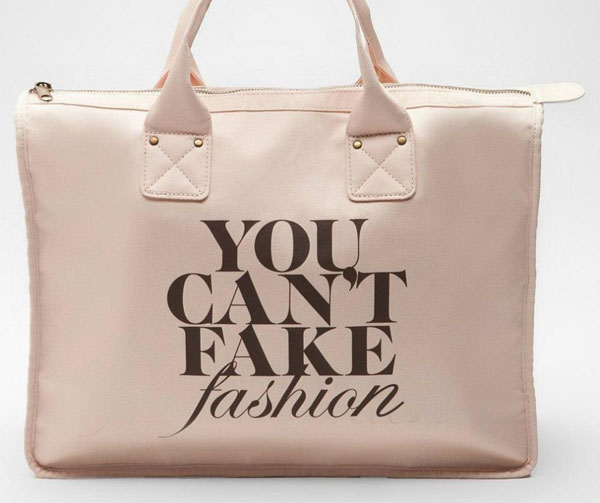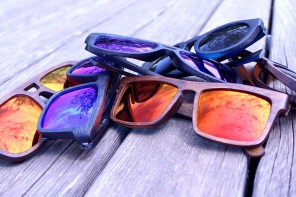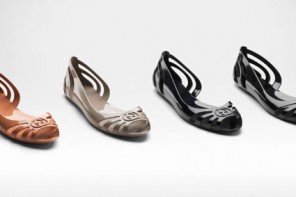One might reason that counterfeit products run amok in any industry – from car parts and machinery to beauty products and teeth whitening knock-offs – but the American Apparel & Footwear Association begs to differ.
“Each year, footwear, apparel, and fashion accessories rank at the top of the list of counterfeit goods seized by U.S. Customs and Border Protection,” said AAFA president and CEO Kevin Burke with the release of a fact sheet identifying the impact of counterfeiting in the US. According to this fact sheet, footwear continues to be the number-one commodity of counterfeit goods seized by customs, accounting for 28% of all infringed goods. Other fashion goods, such as handbags, wallets and belts, were the third most commonly seized fakes with an estimated value of US$21.5-million.
Some people think that buying fake Oakley sunglasses, Guess handbags and Lacoste shirts isn’t a big deal, but besides the fact that it’s illegal, these items are usually produced overseas under disturbing conditions.
A few years ago, the New York Daily News reported: ““In a recent sweatshop raid in Thailand, a group of children, all under 10 years old, was found assembling leather purses. Horrifyingly, their limbs had been deliberately broken to keep them from escaping. The owners had tied their lower legs to their thighs so the bones wouldn’t mend.” This is rough stuff.
The local situation
In 2010, executive director of the South African Clothing Retail Federation Michael Lawrence told West Cape News that the local fashion industry is deeply concerned about counterfeit clothing and cheap imports.
“We are very concerned about illegal activity. We worry when we compete against people who are able to bring their clothes into the market far cheaper than we can because they are importing illegally,” said Lawrence.
In the beginning of this year, the South African Revenue Service (SARS) reported that counterfeit goods with an estimated street value of R7-million had been seized in an operation in downtown Johannesburg. The goods were confiscated from shops and vendors in several streets of the city, but the SARS spokesperson Adrian Lackay couldn’t reveal the types of and brands of the seized goods; and no arrests were made.
The FIFA Soccer World Cup is another prime example of how local crooks try to make a few (actually many) quick bucks from counterfeit products. It was reported that more than R219 080 000 worth of counterfeit World-Cup related goods, including more than 366 000 jerseys, were confiscated since November 2009.
We’re only hurting ourselves
The South African Institute of International Affairs (SAIIA) reported that China’s share of South Africa’s total imports of clothing and textiles grew from 16.1 percent in 1996 to 60.7 percent in 2008. Estimates also indicate that in the last 6 years 69 000 jobs have been lost in the clothing and textiles sector (a drop of 39 percent).
“Hence, labour unions have strongly lobbied for protection to limit further job losses. Nonetheless, imports from China have been able to stimulate the informal market and consumers have benefited from lower prices,” says SAIIA.
According to Business Report and the Cape Clothing Association, almost 10 000 jobs in the clothing and textile industry are lost each year due to the flood of cheap Asian imports. While one can argue that we should simply cut off cheap products from the East and live Proudly South African lives, it’s simply not possible. As Big Issue South Africa pointed out in a recent blog post, China pumped more than US$120-billion into Africa in 2010 alone and “quite frankly we can’t be turning up our noses at their business and aid. But neither can we afford to clench our jaw in a sycophantic smile and meekly hold out the begging bowel while China determines the rules of engagement,” wrote Melany Bendix, the editor of The Big Issue SA.
What you can do
Each year, Harper’s Bazaar runs an editorial investigation on fake trade and the significance of purchasing authentic luxury products. We think it’s important to continuously remind people of the effect of counterfeit products on the economy and the people in our country (as well as those who are slaving away to produce this fast fashion). Harper’s Bazaar has put together a site called Fakes Are Never in Fashion that’s worth checking out. If you buy clothes and accessories online, check out this blog called Counterfeit Chic that tips off online shoppers about fakes.
Besides avoiding obvious counterfeit goods (which are usually available from street vendors and at flea markets), you can also try to spot fake designer clothing. Some tips to try to spot fake cloth include looking at the details. “Whether you are looking at men or women’s clothing, shoddy manufacturing shows up in the stitching in areas such as pockets, seams and labels. Things like jeans, trousers and coats can be check easily because these garments have a lot of stitching on them,” advises Dressedwell.co.uk.
Another option is to notify SARS if you expect that people are selling counterfeit products. If you suspect that somebody is busy selling counterfeit goods, fill in a Suspicious Activity Report in order to notify SARS.











